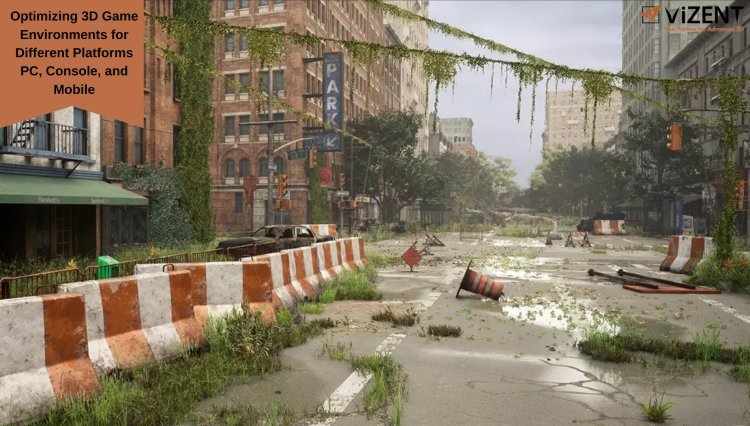Optimizing 3D Game Environments for Different Platforms PC, Console, and Mobile
Optimizing 3D modeling games for PC, console, and mobile requires balancing visual fidelity with performance.

Creating immersive and visually stunning 3D game environments is a cornerstone of modern game development. However, optimizing these environments for different platforms — PC, console, and mobile — is a critical task that can make or break the gaming experience. Each platform comes with its own set of limitations and strengths, necessitating careful planning and execution. In this blog, we’ll explore how to optimize 3D game environments while focusing on 3D modeling games, efficient game assets, and platform-specific considerations.
Understanding Platform Constraints
Before diving into optimization, it’s important to understand the hardware and software constraints of each platform:
- PC: PCs often have the most powerful hardware, capable of handling high-resolution textures, complex shaders, and large 3D environments. However, developers must account for a wide range of hardware configurations, from high-end gaming rigs to budget-friendly setups.
- Console: Consoles like PlayStation and Xbox offer consistent hardware specifications, making it easier to optimize for performance. However, memory limitations and the need for stable frame rates at higher resolutions require developers to be resource-efficient.
- Mobile: Mobile devices are the most resource-constrained platform. Limited processing power, smaller screens, and battery life considerations make it essential to simplify 3D game environments and use lightweight game assets without compromising quality.
Best Practices for Optimizing 3D Game Environments
1. Efficient 3D Modeling
When creating 3D modeling games, efficiency in design is key. Here are some tips:
- Level of Detail (LOD): Use LOD models to provide high-detail assets for close-up views and simplified versions for distant objects. This reduces the computational load on the hardware.
- Polygon Count: Keep polygon counts as low as possible without sacrificing visual fidelity. For mobile platforms, opt for low-poly models, while for PC and console, medium to high-poly models are acceptable.
- Reuse Assets: Reusing game assets such as textures, props, and modular pieces can save memory and reduce the overall file size.
2. Texture Optimization
Textures are among the most memory-intensive components of a 3D game environment. Optimize them using the following techniques:
- Texture Compression: Use platform-specific compression formats (e.g., DXT for PC and console, ASTC for mobile) to save memory.
- Texture Atlases: Combine multiple textures into a single atlas to reduce draw calls and improve rendering performance.
- Resolution Scaling: Provide multiple texture resolution options and load the appropriate one based on the platform and device capabilities.
3. Lighting and Shadows
Lighting significantly impacts both performance and visual quality. Consider these optimization techniques:
- Baked Lighting: Precompute lighting for static environments to reduce runtime calculations. This is especially useful for mobile platforms.
- Dynamic Lighting: Use sparingly on mobile and consoles, reserving it for important areas or objects.
- Shadow Cascading: Implement cascading shadow maps to maintain shadow quality close to the camera while reducing it for distant objects.
4. Physics and Animation
Physics simulations and animations are resource-heavy, particularly on mobile platforms. Optimize these features by:
- Reducing the complexity of collision meshes.
- Using skeletal animations only where necessary.
- Precomputing animations and physics interactions where possible.
Platform-Specific Tips
- PC: Leverage high-end hardware capabilities by enabling advanced shaders, ray tracing, and higher texture resolutions. Provide customizable graphics settings for users.
- Console: Optimize for stable frame rates at targeted resolutions. Use the unified memory architecture of consoles to your advantage.
- Mobile: Prioritize battery efficiency by limiting resource-heavy effects like real-time reflections and using simple shaders.
Testing and Iteration
Thorough testing across all target platforms is essential. Use profiling tools to identify bottlenecks and address them iteratively. For example, Unity and Unreal Engine offer built-in tools to optimize 3D game environments for various platforms.
Conclusion
Optimizing 3D modeling games for PC, console, and mobile requires balancing visual fidelity with performance. By focusing on efficient game assets, texture optimization, lighting, and platform-specific strategies, developers can deliver a seamless and immersive experience across all devices. With careful planning and iteration, your 3D game environments can shine on any platform, captivating players and pushing the boundaries of game development.
What's Your Reaction?












